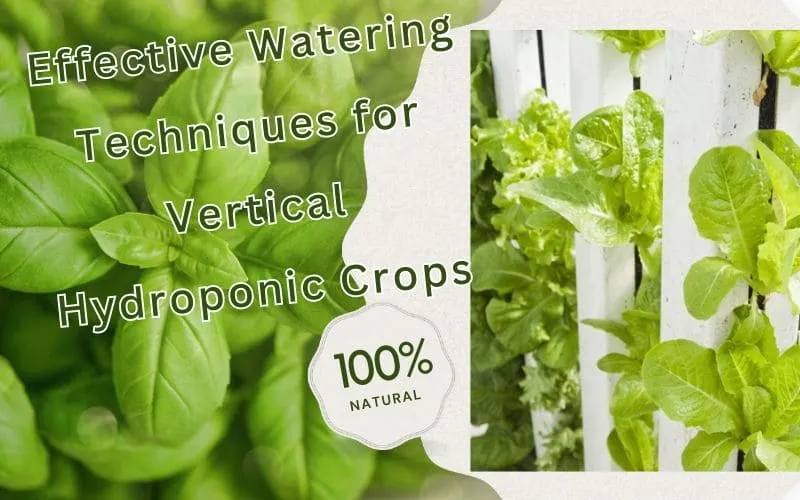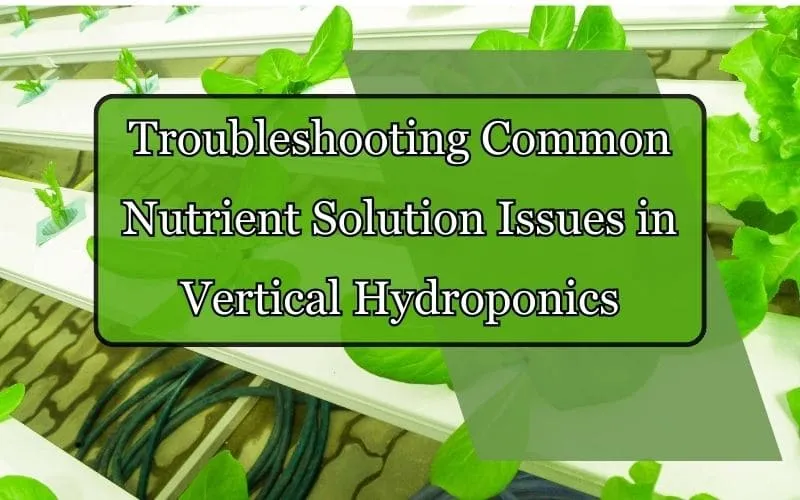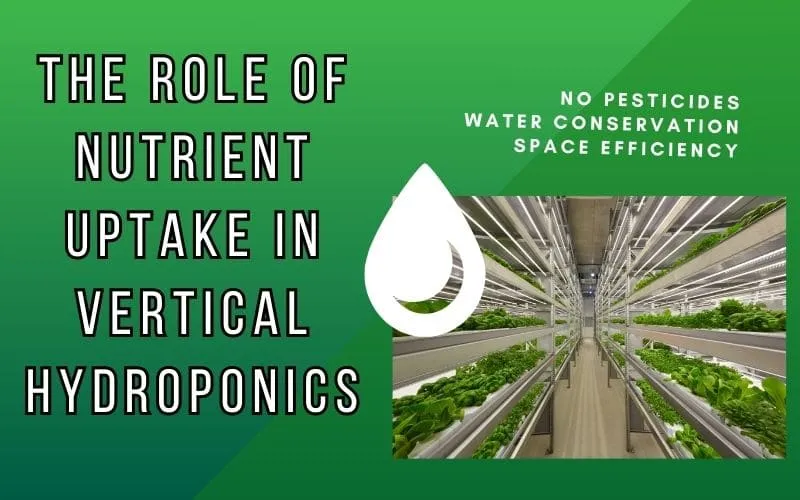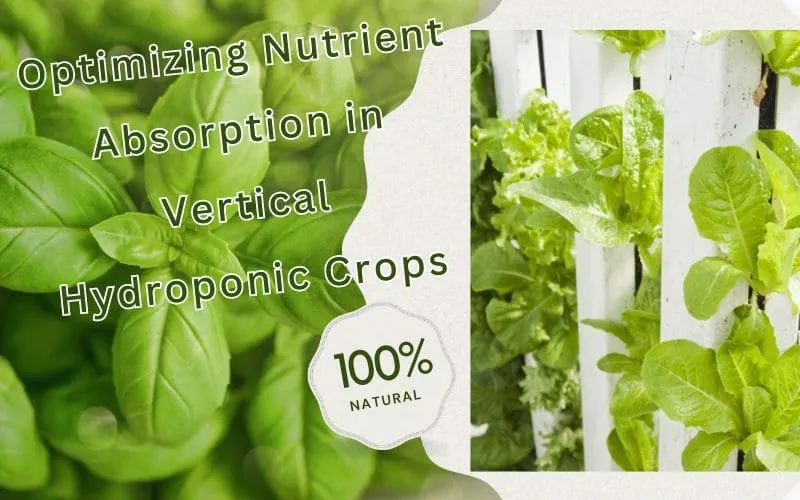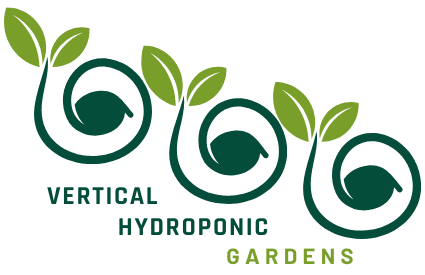Understanding Micro and Macro Nutrients in Vertical Hydroponic Solutions
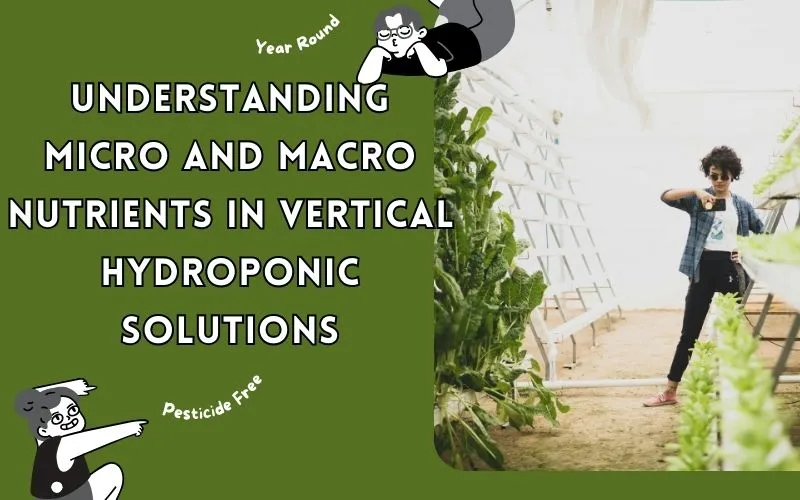
Introduction
Welcome to the world of vertical hydroponic gardening! In this article, we will delve into the fascinating realm of micro and macro nutrients in vertical hydroponic solutions. Whether you are a beginner or an experienced enthusiast, understanding the essential nutrients for your vertical hydroponic setup is crucial for the successful growth of your plants. Let’s explore the importance, types, measurement, management, and common issues related to micro and macro nutrients in vertical hydroponic solutions.
What are Micro and Macro Nutrients in Vertical Hydroponic Solutions?
Micro and macro nutrients are essential elements that provide plants with the necessary components for growth and development in vertical hydroponic systems. In hydroponics, these nutrients are especially critical as they are directly provided to the plants through the nutrient solution, bypassing the soil. This section provides a detailed insight into the significance and types of micro and macro nutrients, along with their role in optimizing plant growth in vertical hydroponic solutions.
- Iron: Although required in small quantities, iron plays a crucial role in the formation of chlorophyll and the transfer of electrons within the plant.
- Copper: This micronutrient is involved in various enzyme systems and the synthesis of certain compounds within the plant.
- Zinc: Zinc plays a role in the synthesis of growth regulators and various enzyme systems, essential for plant development.
- Nitrogen: It is a key component of amino acids, proteins, and chlorophyll, contributing to the overall health and vigor of the plant.
- Phosphorus: Phosphorus is essential for energy transfer within the plant and plays a crucial role in root development and flowering.
- Potassium: This macronutrient regulates various physiological processes in the plant and enhances overall growth and resistance to environmental stressors.
Understanding the distinction between micro and macro nutrients is fundamental in ensuring that plants receive the appropriate elements for optimal growth and development in vertical hydroponic solutions. Nourishing plants with these vital nutrients through precise management is essential for maximizing their potential in this innovative growing method.
Importance of Micro and Macro Nutrients in Vertical Hydroponic Solutions
The importance of micro and macro nutrients in vertical hydroponic solutions cannot be overstated. These essential elements are directly responsible for the plant’s metabolic functions, photosynthesis, and overall resilience to environmental stressors. Insufficient or imbalanced levels of micro and macro nutrients can lead to stunted growth, nutrient deficiencies, and decreased crop yield. By ensuring a well-balanced supply of micro and macro nutrients, vertical hydroponic gardeners can promote healthy plant growth and abundant harvests.
Types of Micro and Macro Nutrients for Vertical Hydroponic Solutions
In vertical hydroponic solutions, the types of micro and macro nutrients required for optimal plant growth encompass a range of essential elements. Providing a comprehensive range of nutrients ensures that plants receive all the necessary elements for their growth and development. Let’s delve deeper into the types of micro and macro nutrients that are vital for successful vertical hydroponic systems:
- Iron (Fe): Iron is a crucial micro nutrient responsible for chlorophyll synthesis and enzyme functions within plants. In hydroponic systems, iron deficiency can lead to yellowing of leaves and affect overall growth.
- Copper (Cu): Copper plays a role in plant metabolism, photosynthesis, and reproductive development. It also aids in the activation of certain enzymes.
- Zinc (Zn): Zinc is essential for the synthesis of growth hormones and the development of enzymes involved in various physiological processes.
- Manganese (Mn): Manganese is necessary for chlorophyll production, nitrogen metabolism, and the photosynthetic process.
- Molybdenum (Mo): Molybdenum is vital for nitrogen assimilation and nitrate reduction, which are integral processes in plant metabolism.
- Boron (B): Boron contributes to cell wall formation, pollen tube elongation, and other physiological processes related to cell division and development.
- Chlorine (Cl): Chlorine is involved in photosynthesis and osmotic regulation, contributing to the overall health and growth of plants in hydroponic setups.
- Nitrogen (N): Nitrogen is a key component of amino acids, proteins, and chlorophyll, making it essential for plant growth and development. It plays a pivotal role in vegetative growth and overall plant vigor.
- Phosphorus (P): Phosphorus is essential for energy transfer, root development, and flower and fruit production. It is a vital component of nucleic acids and essential for various physiological processes.
- Potassium (K): Potassium is involved in enzyme activation, photosynthesis, and the regulation of water within plants. It supports overall plant health and enhances resistance to stress.
- Calcium (Ca): Calcium is crucial for cell wall structure, membrane integrity, and the regulation of various physiological processes. It contributes to plant growth and development in hydroponic environments.
- Magnesium (Mg): Magnesium is a central component of the chlorophyll molecule and is involved in photosynthesis and various enzymatic reactions. It is essential for the overall health and productivity of plants.
- Sulfur (S): Sulfur is a component of certain amino acids, proteins, and vitamins. It contributes to the formation of important enzymes and is integral to the plant’s metabolic processes.
Each of these nutrients plays a distinct role in supporting the plant’s physiological processes, and a balanced supply is essential for maximizing growth and productivity in vertical hydroponic systems.
How to Measure and Adjust Micro and Macro Nutrients in Vertical Hydroponic Solutions
Measuring and adjusting micro and macro nutrients in vertical hydroponic solutions requires careful attention to the plant’s nutritional requirements and the composition of the nutrient solution. Utilizing tools such as electrical conductivity (EC) meters and pH meters helps in assessing the overall nutrient concentration and acidity, allowing growers to make informed adjustments. By understanding the optimal nutrient levels for different plant growth stages and monitoring the solution’s composition, growers can effectively adjust the micro and macro nutrients to maintain an ideal growing environment.
Common Deficiencies and Excesses in Micro and Macro Nutrients in Vertical Hydroponic Solutions
Vertical hydroponic systems are susceptible to various deficiencies and excesses in micro and macro nutrients, which can negatively impact plant health and productivity. Common deficiencies include iron chlorosis, nitrogen deficiency, and magnesium deficiency, leading to symptoms such as yellowing leaves and reduced growth. Conversely, excesses of certain nutrients like phosphorus or potassium can result in imbalanced nutrient uptake and hinder plant development. Identifying and addressing these issues through proper diagnosis and corrective measures is essential for maintaining optimal nutrient levels in vertical hydroponic solutions.
- Iron Chlorosis: This deficiency manifests as yellowing leaves due to insufficient chlorophyll production.
- Nitrogen Deficiency: Symptoms include stunted growth, yellowing lower leaves, and general chlorosis.
- Magnesium Deficiency: Identified by interveinal chlorosis or yellowing of leaves, starting from the leaf margins.
- Phosphorus Excess: Excessive phosphorus can lead to poor zinc and iron uptake, resulting in reduced growth and dark green leaves with purple spots.
- Potassium Excess: Symptoms include reduced magnesium and calcium uptake, leading to weak stems and susceptibility to diseases.
Proper monitoring and testing of nutrient levels are crucial for early detection of deficiencies and excesses. Additionally, implementing targeted corrective measures, such as adjusting nutrient solutions and providing adequate flushing, can effectively address these issues and restore optimal nutrient balance.
Nutrient Solution Management in Vertical Hydroponic Systems
In vertical hydroponic systems, effective nutrient solution management is crucial for creating an optimal growing environment that supports healthy plant growth. Nutrient solution management encompasses the careful monitoring and adjustment of nutrient levels, pH balance, and overall solution composition. This comprehensive approach ensures that plants receive the necessary elements for robust development and bountiful harvests.
One key aspect of nutrient solution management is the regular replenishment of the solution. Over time, plants absorb nutrients from the solution, necessitating the addition of fresh nutrient solution to maintain the desired balance. Additionally, periodic adjustments to the nutrient solution, such as pH regulation and composition modification, play a vital role in sustaining the ideal growing conditions for plants.
Preventive maintenance measures are also integral to the success of nutrient solution management in vertical hydroponic systems. This involves proactive actions to prevent nutrient imbalances, minimize the risk of deficiencies, and optimize the overall health of the plants. By incorporating strategies for preventive maintenance, hydroponic gardeners can establish a stable and nurturing environment that promotes consistent and healthy plant growth.
Furthermore, the effective management of nutrient solutions in vertical hydroponic systems enables gardeners to address specific plant requirements at different growth stages. By tailoring the nutrient solution composition and concentration, growers can optimize the developmental phases of the plants, resulting in improved resilience, productivity, and quality of the harvest.
Conclusion
In conclusion, the management of micro and macro nutrients is essential for the successful growth of plants in vertical hydroponic systems. By ensuring the appropriate balance and availability of nutrients, hydroponic growers can optimize plant health, productivity, and overall yield. To summarize the key points discussed in this article, it is important to:
- Understand the role of micro and macro nutrients in plant growth
- Recognize the significance of maintaining proper nutrient levels in vertical hydroponic solutions
- Learn how to measure, adjust, and address deficiencies or excesses in nutrients
- Implement effective nutrient solution management strategies to support plant development
Moreover, further research and experimentation in nutrient management can lead to advancements in vertical hydroponic practices, contributing to sustainable agriculture and food production.
